Summer Trout Fishing In Rivers: Tactics Used By Guides
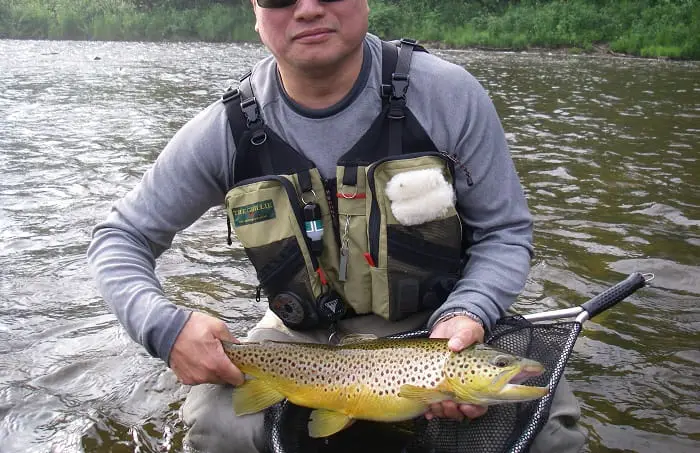
Although catching trout in the summer can be very tought, as an experienced fishing guide, I know that with the right tactics and knowledge, summer trout fishing in rivers can be very good.
If you want to be consistent, these are some of the things I do to keep my clients catching big trout all summer.
- Water Temperatures: Be aware of water temperatures. Above 67F is often poor fishing. When the water temps go above 67, there are areas and times when the water temps can be better.
- Fish Dawn and Dusk: Dawn is when the water temps are coolest, and this is usually when I catch the most and the biggest trout.
- Stealth Is Key: Summertime means low and clear water, and trout are overly cautious. Use my tips for going undetected.
- Small Baits, Lures, And Flies: Because of the low clear water, I have found that smaller and less intrusive baits and lures are best. However, if small doesn’t work first, I will go big.
- Handle The Trout Properly: Warm water can stress the tour out, so if you plan to release your trout, play them to the net quickly, keep them submerged in the net while getting the hooks out, and if you need a picture, do it in less than 30 seconds. Get them back in the water fast.
- Right Spot or Right River: There are some rivers that fish better in the summer, and there are some spots within a river where the water will stay cold, and the trout will stay more active. I tend to fish in headwater areas, cold inflows, and tailwater rivers.
- Trout Migrations: Many trout will migrate up or down the rivers, or even into smaller cold tributaries and they do this at different times of the year. Knowing where they go will improve your success.
I will cover all of this in more detail below.
Summer Trout Fishing In Rivers
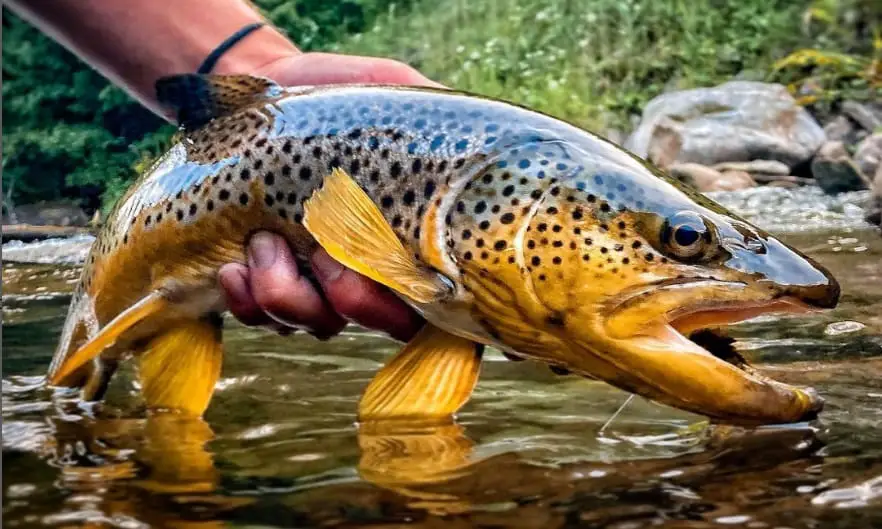
I put a lot of large trout in the net during the summer. Trout will hold anywhere in the river during the summer. Some will hold in deep pools, while some will move into really shallow and fast water that has plenty of oxygen and provides a steady flow of food.
Many of the large summer trout I catch are in water less than three feet deep. Actually, most are in less than two feet of water.
So, if you fish this time of year, look for highly oxygenated water, with some type of structure or cover, like rocks or logs, and don’t be afraid to fish shallower water.
How Does Weather Affect Trout Fishing In The Summer?
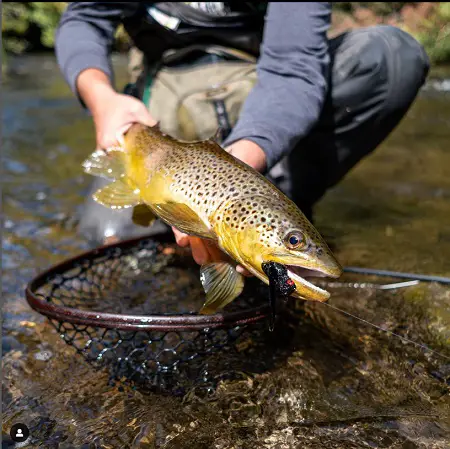
Catching trout in the summer is highly dependent on the weather, especially very hot and dry weather, which can raise water temperatures beyond what trout find comfortable.
If the air temperatures are very high for prolonged periods, trout might shut down as water temperatures increase.
When this happens you need to stop fishing or go find colder water. I’ll explain how I do that below.
Why are summer rains good for trout fishing?
On some rivers, I have determined that summertime trout fishing is at its best immediately after rain. In fact, some of the biggest trout will feed heavily after a rain, and I and other smart anglers and guides will take advantage of this.
Heavy rains raise the water levels and dirty the water a bit, which lowers the big trout’s cautiousness. Rains also trigger runoff from fields and hills, which washes food such as insects like ants and beetles into the river.
Heavy rains can also knock insects off leaves and grasses along the rivers and into the rivers. Heavy rains can also knock bugs right out of the air and into the river.
All this food at once can cause a trout feeding frenzy.
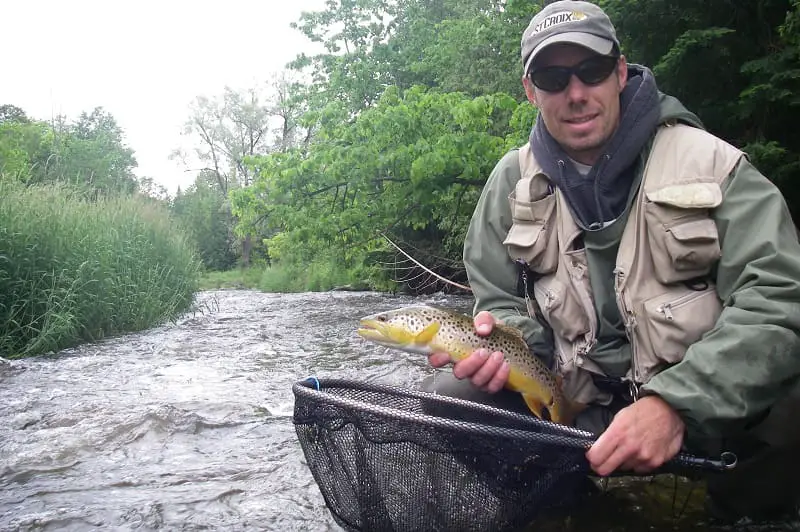
Check out Trout Fishing In The Rain and Trout Fishing After The Rain.
What Is The Best Time Of Day For Catching Trout In Summer?
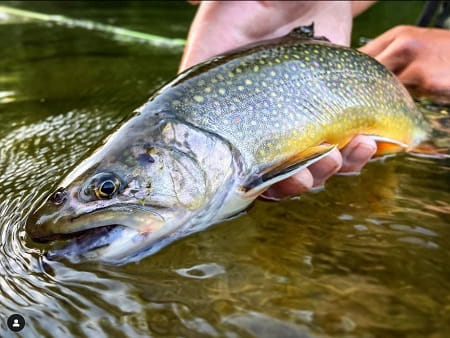
During the hot summer days, I find that trout are most active during the early morning hours and at dusk.
For this reason, all the guiding that I do in the summer is early in the morning.
The water temperature is usually too high during the day, and often, by 11 am, the trout feel stressed and stop feeding.
It has been my experience that once the water temperature hits around 68F the trout naturally stop feeding.
It’s not uncommon for me to check water temps every hour in the later morning, and if I notice the trout activity levels have dropped, it’s always because the water temps are 68F or above. This is when I either go find colder water (I know some good spots) or I call it quits for the day.
Ofter, moving upriver on on spring creek can provide colder water suitable for trout fishing. Smaller spring creeks and creeks and rivers with plenty of forest cover can remain cold all day so I may change rivers.
If you do not have a stream Thermometer check out the Orvis Encased Stream Thermometer
- White River Fly Shops Stream Thermometer
- Umpqua Stream Thermometer
Here is the trout fishing timetable you can use for reference when targeting trout in summer:
| Air temperature (Fahrenheit) | The best time of the day to fish trout |
| 61 to 65 °F | All Day or when the insects are active |
| 66 to 70 °F | All Day or when the insects are active |
| 71 to 75 °F | 6 a.m. to 12 p.m. |
| 76 to 80 °F | 7 a.m. to 11 a.m. |
| 81 to 85 °F | Dawn to 11 a.m. |
| 86 to 89 °F | Dawn to 9 a.m |
As you can see, the hotter it is outside, the earlier you should fish. You should be at your spot during the first two hours from sunrise.
Night Fishing Is Another Option
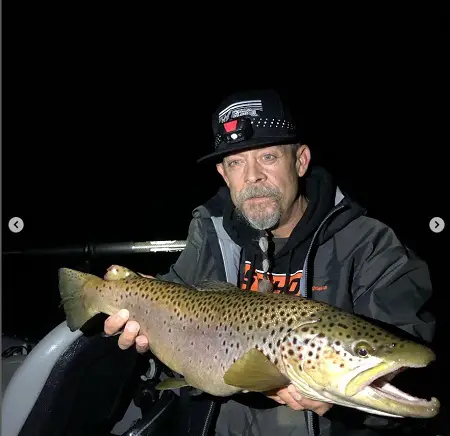
As the sun lowers in the sky, the water temps will start to become colder; this is more true on spring-fed rivers and streams which cool fast.
For the adventurous angler, night fishing for trout when the water is cool is a good way to get into some trophies. See Trout Fishing At Night: Over 31 Expert Guide Tips.
What Is The Ideal Water Temperature For Catching Trout In Summer?
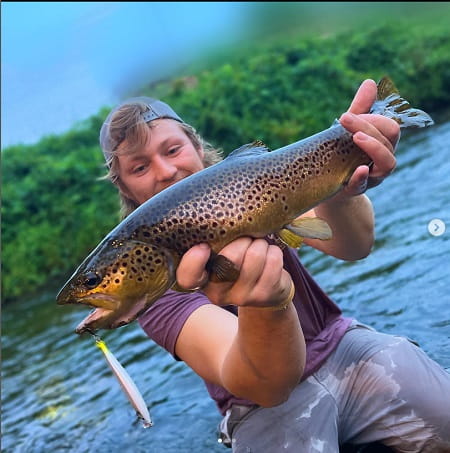
When water gets warmer, trout feed less actively or not at all, and it is harder or impossible for you to catch them.
In general, trout feed actively when the water temperature is between 50 and 65 degrees Fahrenheit. However, different types of trout tolerate different water temps.
For example, brook trout, bull trout, and cutthroat trout feed in colder waters than rainbow trout and might even feed well in 34 – 40 degrees Fahrenheit. Their preferred feeding temps are 40 to 60F.
Rainbow trout feed actively when the water temp is between 40 – 65F degrees. However, they prefer temperatures in the 52 – 64 degrees Fahrenheit range. Brown trout can tolerate slightly higher temperatures for prolonged periods than rainbow trout but their feeding temps are about the same.
Best Summer Trout Rivers
Some rivers are better than others when it comes to staying cold in the summer, and some sections are better as well.
Spring Creeks
Spring creeks will have incoming water from springs, whether that means groundwater upwellings in the river bed itself or incoming spring tributaries.
Either way, the spring water comes out of the ground year-round cold which is great for trout. This is why spring creeks are often good rivers to fish during the summer.
Something to consider is that the upper reaches of spring creeks and some freestone creeks have the coldest water, and therefore, the upper sections might see trout migrating into them when the lower river water warms up too much.
I’ve seen radio tracking studies that show migrations of trout going up the river over 20 miles.
Tailwater Rivers
Tailwater rivers are rivers with dams with a deep reservoir, and the water from that reservoir goes under the dam and not over the dam. The water at the bottom of the reservoir is often very cold and will be more stable in both summer and winter.
For this reason, the survival of the trout is maximized, and it’s why tailwater rivers can be the best rivers to fish in the summer and winter.
Heavily Forested Rivers
Forested rivers and creeks are shaded and therefore will stay much cooled so these are also worth trying.
Catch-And-Release Fishing In Rivers
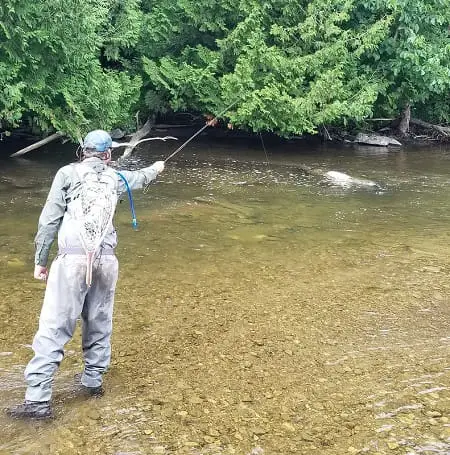
Before you fish in the summer there are a few things you should do.
If you practice catch-and-release trout fishing in summer, you need to be extra careful not to hurt or kill the fish.
Try to bring the trout into the net as soon as possible in warmer water. You should avoid playing with the fish long because it can become exhausted quite quickly in the warmer temps.
Using slightly heavier leaders can help.
Fighting a fish for too long in warmer water can be fatal for the fish!
Try not to touch the trout too much, and USE A NET.
Keep the fish’s head in the water as much as you can, and release it as soon as possible.
AIR KILLS FISH! it is very important to keep the fish below the surface. 20 to 30 seconds out of the water for a photo is plenty.
Do not drag fish up onto the bank, if you plan to release them, leave them in the net and leave them below the surface.
Best Spots For Fishing Summer Trout In Rivers?
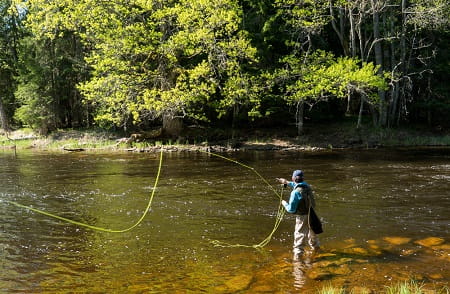
Your goal is to find colder areas of the river in the summer. As temperatures rise, large trout can migrate over 40 miles in search of cooler water areas, which are usually upstream or around the feeder streams.
In summer, experienced anglers usually fish the first few miles of the upper river. Some call this the headwaters of the river.
Some trout will also hold just below where small cold incoming feeder creeks enter the main river. Some trout will even migrate up these feeder creeks in search of colder water where they can survive the summer heat.
Oxygen Levels In Summer
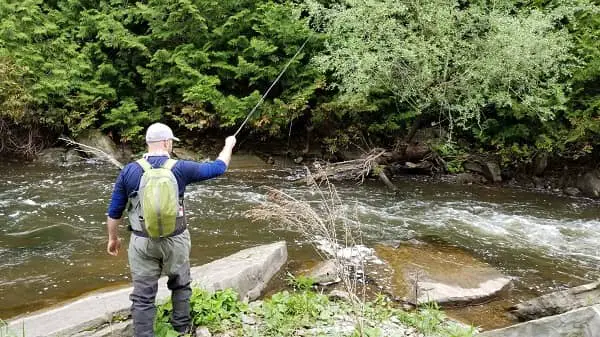
Oxygen also plays an important role in a trout’s life, and it’s something that many anglers don’t understand.
Normally, colder water has more oxygen content than warmer water. Cold water is also denser and heavier than warmer water, and it sinks or doesn’t rise; therefore, often, the coldest and most oxygenated water will be in the deepest pools.
Sometimes, the best-oxygenated water is in the rapids and riffles, and I have seen even big trout move out of slower and slightly deeper sections and move into 12 to 24 inches of fast water simply because the oxygen content is better. Anglers should start trying to fish fast water during the summer.
When trout fishing in the summer, you should try fishing spots such as:
- Deep holes at the foot of rapids
- Riffles and pocket water
- Obstructions breaking the current
- Waterfalls
- Shady or covered water areas
- Open water near undercut banks
What Do Trout Eat In Summer?
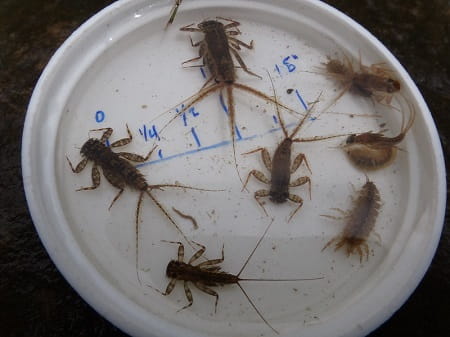
Trout mostly feed on aquatic and terrestrial insects, but they sometimes eat other fish, leeches, worms, and crustaceans, too.
Match what the trout are feeding on, and you will do better.
What Is The Best Type Of Bait For Catching Trout In Summer?
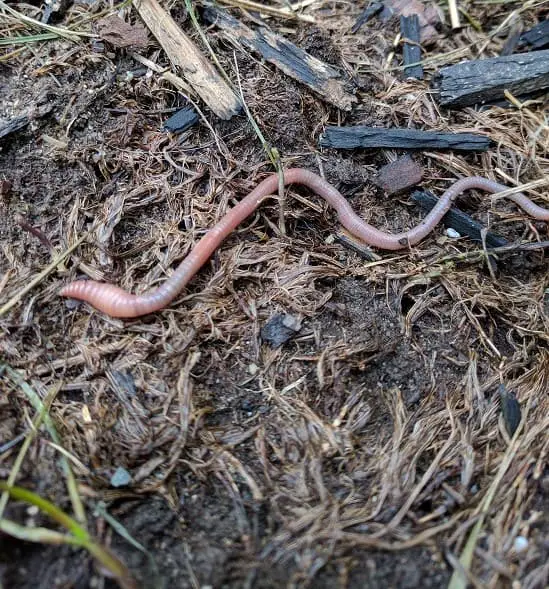
Worms might be fantastic in the spring when they are often found all over the place after spring rains, but during the summer, worms are not always as effective simply because they are less abundant.
But that doesn’t mean you shouldn’t try a worm.
Some anglers will use egg-type baits like spawn bags, single eggs, and trout beads.
Minnows, leeches, crawfish, grubs, maggots, and flies are also good options in the summer.
Avoid bad trout baits and use only what I refer to as high-percentage baits.
What Is The Best Type Of Lure When Fishing For Summer Trout?
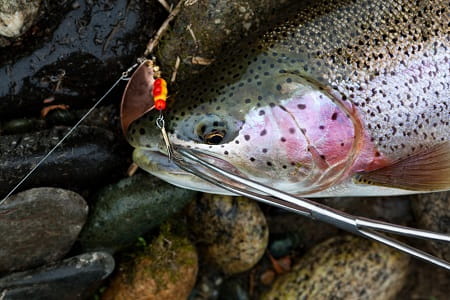
Trout are attracted by the lures that flutter and dart. You can thus try spinners, spoons, and crankbaits for summer trout.
See my tips and tactics on Lure Fishing For Trout.
If you fish from the riverbank on smaller rivers, opt for a small size 0 or 2 spinners but when fishing bigger rivers that require long casts, don’t be afraid to upsize to a 3# or #4 spinner, especially for casting baits in the early morning or late afternoon when the big trout are most active.
Try a Panther Martin or Mepps spinner – both have a good track record.
What Is The Best Type Of Flies For Catching Summertime Trout?
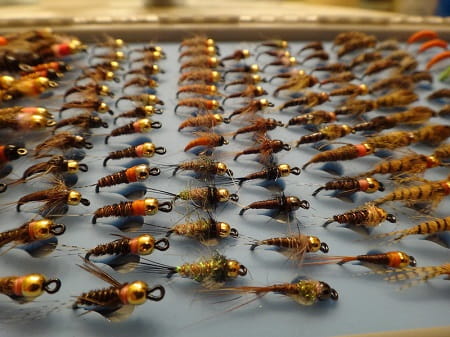
Small nymphs, dry flies, terrestrial like grasshoppers, beetles, ants, and crickets can be very good. Check out my 29 Best Flies For Trout.
Flies are a very effective during the summer, and you may not be a fly angler, which is okay because flies can be effectively fished using spinning rods and reels.
The Best River Fishing Tactics For Catching Summer Trout
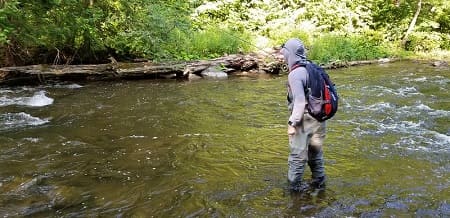
Float fishing with a good bait below a float is a great method in deeper water over 3 feet deep. In shallower water than three feet your float can actually spook the trout.
Bottom bouncing is a very effective method in shallow runs, pockets, and riffles.
Fly fishing for trout is my favorite method at any time of the year, but it can be exceptionally effective When fishing for trout in the summer when the water is low and clear.
For more detailed information, see the full article – HERE
Tight Lines,
Graham
Resources:
Trout Activity Water Temperature: Trout Optimal Water Temperatures – MyWaterEarth&Sky

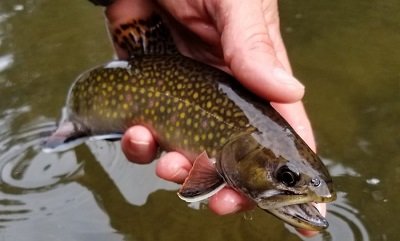
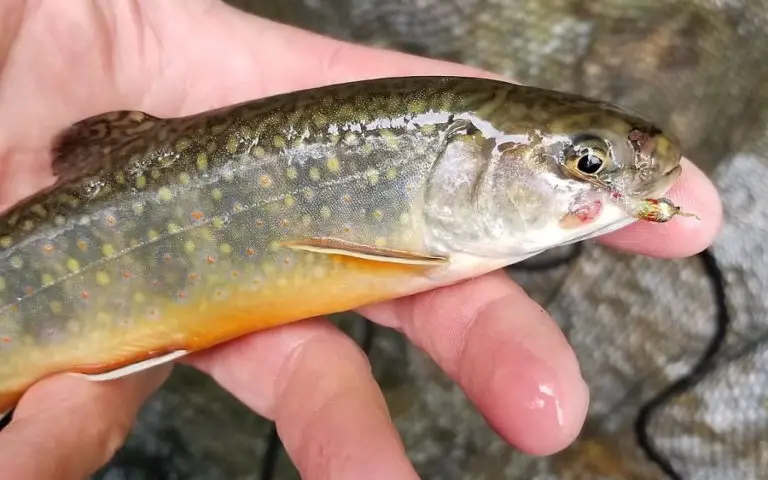
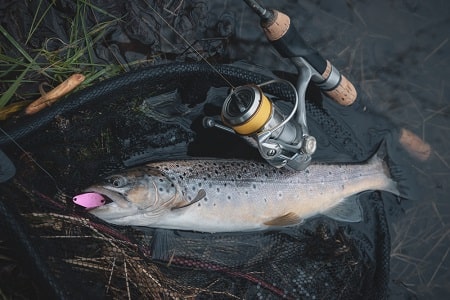
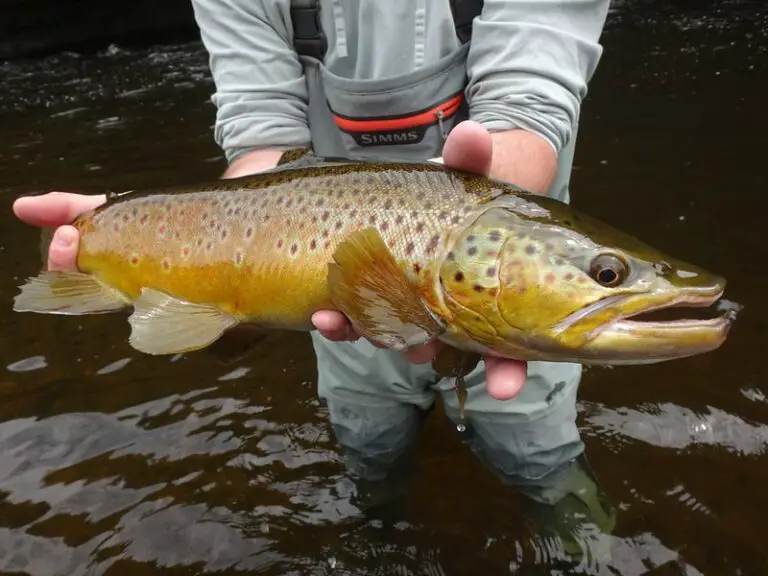
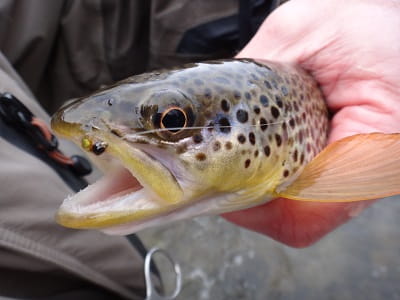
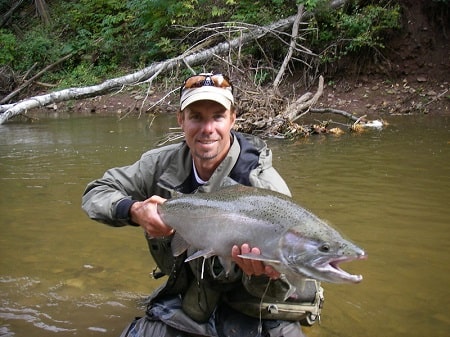
Great advise thank-you